Kebon Kopi Inscription I , also known as Inscription Elephant Tread is one of the historical evidence of the existence of the Tarumanegara Kingdom.
Tarumanegara kingdom is a Hindu kingdom in the 4th century until the 7th . It was the ruler of West Java. This kingdom was once ruled by a king named Purnawarman. During his reign he had ordered the excavation of two rivers, the River of Gomati and also Candrabaga (now known as Bekasi River). At the time of its inauguration, the king gave 1000 cows to the Brahmins.
The territory of this empire includes, in its name now, Jakarta, Bogor, Banten and almost the entire western part of Java island. It is, therefore, not surprising to find proofs of this royal relics in the cities mentioned above.
There are at least 5 pieces of the relics from Tarumanegara inscription in Bogor and 2 in Jakarta. In the region of Ciaruteun, Ciampea, Bogor regency there are at least two inscriptions found. Inscription Kebon Kopi I or Inscription Elephant Tread is one of them.
The discovery of the Kebon Kopi Inscription I or Inscription Elephant Tread
Kebon Kopi inscription or The Coffee Field Inscription attached to this historic sites is derived from the place where the inscription was found.
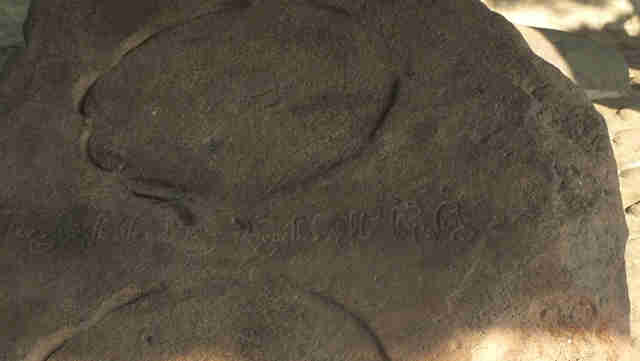 The land needs for the development of the coffee crop in the region Ciampea and Dramaga in the 19th century, made a lot of Dutch entrepreneurs doing logging. The land was later used to plant many commercial plants such as coffee. That’s the origin of the historic site name as it’s found in coffeee field (Kebon Kopi)
The land needs for the development of the coffee crop in the region Ciampea and Dramaga in the 19th century, made a lot of Dutch entrepreneurs doing logging. The land was later used to plant many commercial plants such as coffee. That’s the origin of the historic site name as it’s found in coffeee field (Kebon Kopi)
Another inscription was also found at a distance not too far from the location of the first. The second inscription is named inscription of Kebon Kopi II or Pasir Muara Inscription.
The other name of the site, Tread Elephant inscription refers to two forms of sculpture that resembles Elephant Tread in the tablets. In the middle, there is a line of script Pallawa.
Inscription forms of Kebon Kopi I or Elephant Tread Inscription.
Without this Pallawa writings and two sculptures Elephant Tread on it, the inscription is no different from the usual stone.
Its size is not too big less lbih 1-2 meters with a height of 50 centimeters only.
Both Tread Elephant can be seen on the surface of the stone. In the middle there is a row of Pallawa who have more or less sound
~ ~ ~ ~ Jayavisalasya Tarumendrasya hastinah
Airwavatabhasya vibhatidam ~ padadvayam
The meaning of the sentence cuts
“It could see depicted a pair of soles … like Airawata, elephants Taruma great ruler in … and (?) Triumph“
——-
Despite its name, the inscription of Kebon Kopi I (coffee field) , if you now visit the place, you will not find any coffee plants in the vicinity. Business coffee plantations in this region were never developed successfully. Lots of Dutch businessmen failed to obtain success on coffee rRepeatedly changing crop types with no success too.
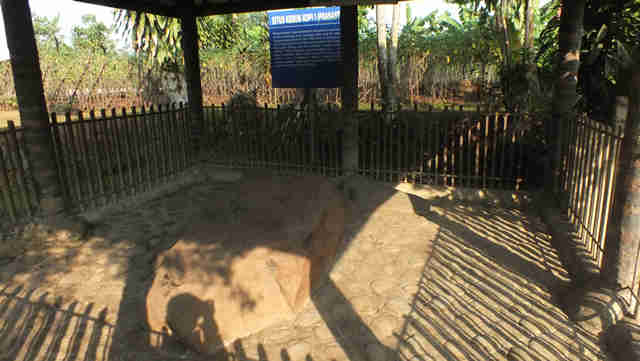 To this day, when this article was written , the type of plant widely around the inscription of Kebon Kopi I was cassava, not coffee.
To this day, when this article was written , the type of plant widely around the inscription of Kebon Kopi I was cassava, not coffee.
This site location is also not so dedicated as a place of tourist visits. A cupola-roofed and fenced protect it from the rain but still give a chance to anyone who visited to photograph or see, even from outside the fence.
If you are history lover, this is one of the places you should not overlook when you are in Bogor.
(Read also : Bogor City Hall)

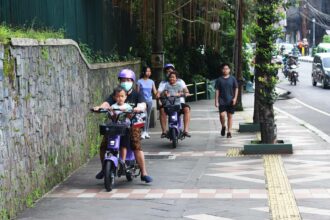
![[PHOTO] A Street Portraitist on Juanda Street Still Exist](https://lovelybogor.com/wp-content/uploads/2023/09/PHOTO-Street-Portraitist-on-Juanda-Street-Still-Survives-330x220.jpg)
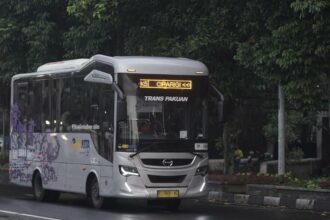
![[PHOTO] How Subsidized LPG (Liquid Petroleum Gas) Distributed in Bogor?](https://lovelybogor.com/wp-content/uploads/2023/09/How-Subsidized-LPG-Distributed-in-Bogor-330x220.jpg)
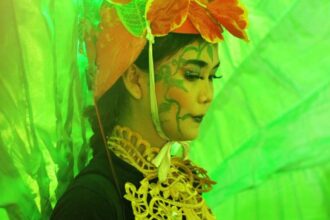
![[PHOTO] No Longer Just A Town, Bogor is a Metropolis](https://lovelybogor.com/wp-content/uploads/2023/09/No-Longer-Just-Town-Bogor-is-a-Metropolis-330x220.jpg)
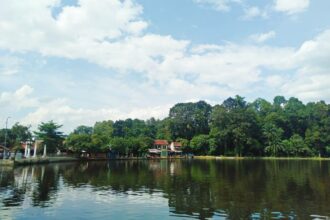
![[Photo] The East Side, The Old Parts of Bogor Commuter Train Station](https://lovelybogor.com/wp-content/uploads/2022/09/The-old-part-of-Bogor-Commuter-Train-StationIMG_4233-330x220.jpg)
![[Photos] Old Machine Guns From Indonesian Independence Era – Bogor Perjuangan Museum](https://lovelybogor.com/wp-content/uploads/2022/09/Old-Machine-Guns-From-Indonesian-Independence-Era-Bogor-Perjuangan-Museum-3-330x220.jpg)
![[Photos] Two Landmarks of Bogor City – Kujang Monument and The Nine Gates](https://lovelybogor.com/wp-content/uploads/2022/09/Photo-Two-Landmarks-of-Bogor-City-Kujang-Monument-The-Nine-Gates-330x220.jpg)
I wonder why coffee never worked out but cassava did. Maybe it’s time to change the name? Or keep the name and try coffee again? 😀
Ok then let’s change the inscriptio’s name to Cassava Field Inscription..:D